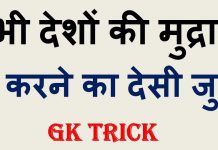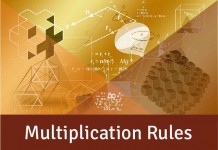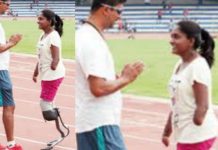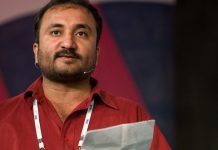Red Corridor to be redrawn by govt.
The government is planning to reduce the number of Maoist-affected districts by about a fifth in the country.
Details:
- Over 20 of the 106 districts which have been described as being Maoist-affected and are part of the Red Corridor will be removed from the list. This exercise, under way now for two years, is being done for the first time since 2006, when the Maoist-affected districts were identified and graded on the basis of their violence profile.
- The names of the districts and the reasons for being considered to be taken off the list have been communicated to the States and a response is awaited.
- However, the names are not being revealed now because of the sensitivities of the States which fear that once a district is taken off the list financial aid which is made available to the districts – to the tune of Rs. 30 crore annually for various developmental work – will dry up.
What are LWE affected states?
The 106 districts which span 10 States — Bihar, Jharkhand, Andhra Pradesh, Maharashtra, Odisha, Telangana, West Bengal, Madhya Pradesh, Uttar Pradesh and Chhattisgarh — are described as those affected by Left Wing Extremism (LWE) and constitute the ‘Red Corridor.’ Of these, 44 districts are said to be the worst-affected. India has a total of 683 districts.
The considerations on which the government has examined the districts with LWE features are:
- Their violence profile.
- An assessment of the kind of logistical and other support provided to armed Maoist cadres by their sympathisers and over ground workers.
- The kind of positive changes brought about by development work that these districts have seen.
U.P., Rajasthan lead in crimes on SCs
According to the latest data released recently by the National Commission for Scheduled Castes (NCSC), Uttar Pradesh and Rajasthan lead the country in the number of crimes registered against the Scheduled Castes.
Highlights:
- with 20% of India’s Dalit population accounts for 17% of the crimes against them.
- 52% to 65% of all crimes in Rajasthan have a Dalit as the victim. This despite the fact that the State’s SC (Dalit) population is just 17.8% of its total population.
- Bihar, with 6,721 to 7,893 cases, accounts for 16-17% of the all-India crimes against Dalits with just 8% of the country’s SC population.
- Gujarat’s numbers of crimes against Dalits had jumped to 6,655 in 2015 from 1,130 in 2014.
About National Commission for Scheduled Castes:
It is a constitutional body established with a view to provide safeguards against the exploitation of Scheduled Castes. To promote and protect their social, educational, economic and cultural interests, special provisions were made in the Constitution.
Background:
In order to ensure that the safeguards provided to SCs and STs are properly implemented, the Constitution on its inception provided for appointment of a special office under Article 338 of the Constitution to investigate all matters relating to the safeguards provided for Scheduled Castes & Scheduled Tribes and report to the President about the working of these safeguards. In pursuance of this provision a Special Officer known as the Commissioner for Scheduled Castes & Scheduled Tribes was appointed for the first time on 18th November, 1950.
- A proposal was mooted for amendment of Article 338 of the Constitution (46th Amendment) by replacing the single member Special Officer by multi-member system. The first Commission for SC & ST came into being on August, 1978.
- The setup of the Commission of 1978 underwent change in 1987 and it was named as National Commission for Scheduled Castes and Scheduled Tribes. This Commission being a National Level Advisory body played the role of adviser on major policy and developmental issues relating to SCs/STs
- Later, through the 89th Amendment of the Constitution it was decided to have a separate National Commission for Scheduled Castes & separate National Commission for Scheduled Tribes. This came into effect in 2004.
- Thus, the erstwhile National Commission for SCs & STs was bifurcated into two different Commissions.
Functions of the commission:
- To investigate and monitor all matters relating to the safeguards provided for the Scheduled Castes under this Constitution or under any other law for the time being in force or under any order of the Government and to evaluate the working of such safeguards.
- To inquire into specific complaints with respect to the deprivation of rights and safeguards of the Scheduled Castes.
- To participate and advise on the planning process of socio-economic development of the Scheduled Castes and to evaluate the progress of their development under the Union and any State.
- To present to the President, annually and at such other times as the Commission may deem fit, reports upon the working of those safeguards.
- To make in such reports recommendations as to the measures that should be taken by the Union or any State for the effective implementation of those safeguards and other measures for the protection, welfare and socio-economic development of the Scheduled Castes.
- To discharge such other functions in relation to the protection, welfare and development and advancement of the Scheduled Castes as the President may, subject to the provisions of any law made by Parliament, by rule specify.
J&K gets 10% of Central funds with only 1% of population
An analysis has revealed that Jammu and Kashmir has received 10% of all Central grants given to states over the 2000-2016 period, despite having only 1% of the country’s population.
- Uttar Pradesh makes up about 13% of the country’s population but received only 8.2% of Central grants in 2000-16. That means J&K, with a population of 12.55 million according to the 2011 Census, received Rs.91,300 per person over the last sixteen years while Uttar Pradesh only received Rs.4,300 per person over the same period.
- Even among the special category states, Jammu and Kashmir receives a disproportionate amount of Central assistance. The state received Rs.1.14 lakh crore in grants over the sixteen years under review. This is more than a quarter of the Central funds disbursed to the 11 special category states in that period.
Zebrafish provide insights into a rare human disease
Scientists from the Delhi-based CSIR-Institute of Genomics and Integrative Biology are a step closer to bringing hope to children born with a rare disorder — CHARGE syndrome — if the results seen in zebrafish are reproducible in humans. Scientists have studied the fertilised egg of a zebrafish to better understand the CHARGE syndrome.
Why zebrafish?
Following fertilization, zebrafish embryos are transparent. This allows scientists to observe the inside of the embryo and watch in real time how various organs develop. Since most organs begin forming in the first 24-36 hours and are fully formed within five days, it allows researchers to study the development of an organism from egg to maturity. An RNA injected into a one-cell embryo interferes with the making of the CHD7 protein, thus producing a zebrafish embryo with very similar problems as the human babies with CHARGE syndrome.
CHARGE syndrome:
CHARGE syndrome is a disorder that affects many areas of the body. CHARGE stands for coloboma, heart defect, atresia choanae (also known as choanal atresia), retarded growth and development, genital abnormality, and ear abnormality.
- The pattern of malformations varies among individuals with this disorder, and infants often have multiple life-threatening medical conditions.About two third of cases are due to a CHD7 mutation.
- The major characteristics of CHARGE syndrome are more specific to this disorder than are the minor characteristics. Many individuals with CHARGE syndrome have a hole in one of the structures of the eye (coloboma), which forms during early development.
- Some people also have small eyes (microphthalmia). One or both nasal passages may be narrowed or completely blocked.
- Individuals with CHARGE syndrome frequently have cranial nerve abnormalities. The cranial nerves emerge directly from the brain and extend to various areas of the head and neck, controlling muscle movement and transmitting sensory information.
- Abnormal function of certain cranial nerves can cause swallowing problems, facial paralysis, a sense of smell that is diminished (hyposmia) or completely absent (anosmia), and mild to profound hearing loss. People with CHARGE syndrome also typically have middle and inner ear abnormalities and unusually shaped ears.
- The diagnosis of CHARGE syndrome is often difficult, because it is rare. The syndrome spans many disciplines, and as such, can be diagnosed by a pediatrician, oral and maxillofacial surgeon, ENT specialist, ophthalmologist, audiologist, endocrinologist, cardiologist, urologist, developmental specialist, radiologist, geneticist, physiotherapist, occupational therapist, speech therapist, or orthopedic specialist.
Short News
World’s largest seaplane unveiled by Chinese state company
China has completed the production of the world’s largest amphibious aircraft. The plane, dubbed theAG600, was unveiled by the state-owned Aviation Industry Corporation of China (AVIC). The aircraft, which has a maximum range of 4,500 km, is intended for fighting forest fires and performing marine rescues. At around the size of a Boeing 737, it is far larger than any other plane built for marine take-off and landing.
NGOs have to Register with NITI Aayog for Grants
Stepping up its scrutiny of NGOs, especially their financial dealings, the Centre has made obtaining unique identification numbers and registering them on the NITI Aayog portal, including the details of the Aadhaar and PAN numbers of all their trustees and office- bearers, mandatory for them to apply for grants from any ministry. In this regard, all ministries have been directed to process the proposal for grants and releases to the NGOs only through the Aayog’s portal. Also, as per the latest decision, managers, directors, board members of NGOs will have to declare their personal assets, jewellery, cash, moveable and immoveable property by July 31. They will also be subject to rules and regulations for government officials under the Prevention of Corruption Act.
Dark Matter Remains Elusive
The world’s most sensitive dark matter detector, Large Underground Xenon (LUX), has failed to yield any trace of the elusive substance, dark matter, thought to account for more than four-fifths of the mass of the universe, even after 20 months of operation. The Large Underground Xenon (LUX) dark matter experiment, which operates beneath a mile of rock at the Sanford Underground Research Facility in the Black Hills of South Dakota, U.S., has completed its silent search for the missing matter of the universe. Dark matter is thought to account for more than four-fifths of the mass in the universe. Scientists are confident of its existence because the effects of its gravity can be seen in the rotation of galaxies and in the way light bends as it travels through the universe.


















